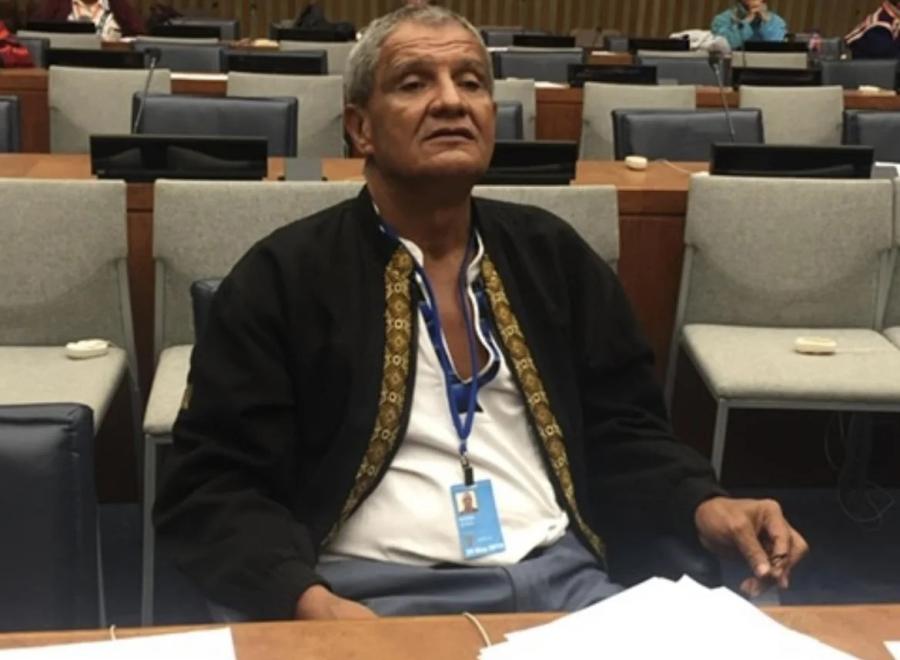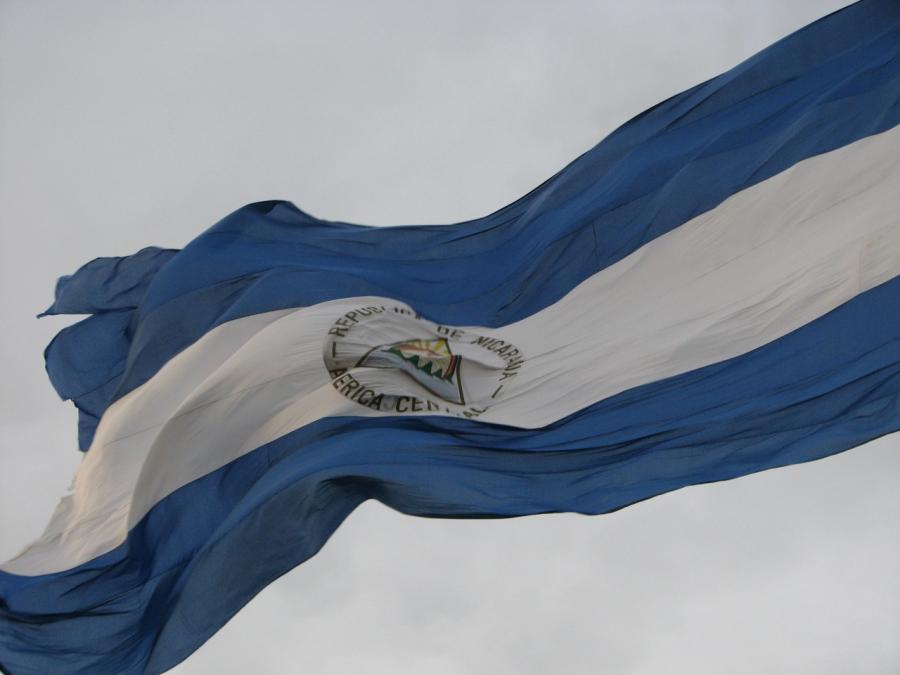The past decade has witnessed a great expansion in the activities of organizations dedicated to promoting the international protection of the human rights of indigenous populations. Today, a worldwide network of support organizations exists which can respond to crisis situations faced by native communities, bring these situations to the attention of the media and other human rights groups, and promote the rights of indigenous peoples before the United Nations and other international forums. Yet, despite the growth of this network and its increasing public recognition, there are still serious questions about how effective these organizations can be in furthering the cause of indigenous peoples. There are a number of areas where indigenous support groups can increase their effectiveness in the international arena while, at the same time build stronger links with local and national organizations working for the protection of indigenous peoples' rights.
Perhaps the most powerful resource possessed by the international movement on behalf of indigenous peoples' rights is its access to systematic and reliable information about human rights abuses against indigenous populations. The International Work Group for Indigenous Affairs (IWGIA) in Copenhagen took the lead in this process of information gathering and distribution by establishing its documents series on the contemporary situation of indigenous peoples. Early IWGIA reports mainly focused on state policies toward tribal groups in the tropical forest areas of South America. Such literature, which represents a significant achievement on the part of organizations dedicated to promoting the cause of indigenous peoples, is increasingly finding its way into the hands of journalists, more well-known human rights groups such as Amnesty International, and international bodies such as the United Nations and the Organization of American States.
Nevertheless, as the amount of information about the contemporary situation of indigenous peoples increases, there appears to be an enormous duplication of effort and a lack of real division-of-labor among the many international organizations dedicated to promoting indigenous peoples' rights. It is common, for example, for some critical event or situation to arise in a Third World country (e.g., the recent attempt to introduce mining on Indian lands by private companies in Brazil) and for simultaneous information packets and press releases to be distributed by many groups throughout the world.
While the case can be made that these groups have different audiences and reach different centers of influence, this duplication of effort tends to decrease the effectiveness of the limited resources available to international support groups. It also forces national organizations, which are providing strategic support to local indigenous communities, to communicate with a plethora of international organizations, rather than with a single organization which can then communicate their grievances to other international support groups and to the appropriate media sources and public agencies. Unfortunately, as the international movement on behalf of indigenous peoples' rights has grown, there has been a tendency for each organization to carve out its own sphere of influence with key individuals and organizations in Third World countries and to compete with other international organizations to see who can most rapidly respond to some critical situation or event.
As an alternative, I would suggest that the several international organizations currently concerned with these matters hold regular meetings and begin to coordinate their activities, especially in the vital area of information gathering and distribution. As a beginning to such formal cooperation, I think we should establish a joint documentation project, perhaps modeled after Human Rights Internet or the Indigenous Peoples Network, which would systematically organize, with the assistance of computers and microfilm technology, the large and growing body of information on the worldwide situation of indigenous peoples. The impetus and direction for such a cooperative documentation project should come from the already existing network of international support groups and include on its advisory board representatives of local, national, and international indigenous peoples' organizations.
One thing that such a documentation project could do is to publish an annual directory on the worldwide situation of indigenous peoples. The directory could provide brief descriptions of the current policies toward indigenous peoples of nation states, the role being played in this area by international organizations such as the UN, and the activities of the worldwide network of indigenous organizations and support groups. Such an annual directory, especially if it draws upon the combined resources of all of our organizations and was simultaneously published in English, French, German, Spanish, and Portuguese, could serve as an important source of information for other individuals and organizations who wished to contribute to the indigenous cause.
At the same time, I think we should make a greater effort to systematically assess those international institutions which might potentially assist us in promoting and defending the rights of indigenous peoples. One of the major successes of recent years was the way in which the 1977 and 1981 NGO conferences in Geneva set the groundwork for the establishment of the Permanent Working Group on Indigenous Populations within the UN Human Rights Commission's Subcommission on the Prevention of Discrimination and Protection of Minorities. Today, as a result of the efforts of numerous non-governmental organizations and indigenous leaders, we have a permanent forum within the UN - albeit still not a very powerful one - where native peoples can express their grievances and seek some sort of international recognition of their rights.
I believe that we might profit from a more systematic study of other international agencies, especially how they function and what potential they offer for the promotion and defense of indigenous peoples' rights. For instance, I am currently conducting a study of the role of the OAS Inter-American Commission on Human Rights in the promotion and protection of the human rights of indigenous populations. To my surprise, I have discovered that the Inter-American Commission has a long history of concern for human rights abuses against Indians which predates the Ache case that was presented to the Commission by the International League for the Rights of Man in 1974 and the Yanomami case that was brought before the Commission by the American Anthropological Association, Anthropology Resource Center, Indian Law Resource Center, and Survival International in 1980. In addition to a consideration of cases involving human rights abuses against Indians in Colombia, Guatemala, and Nicaragua, the Inter-American Commission has also been assisting in the drafting of an Additional Protocol to the American Convention on Human Rights in the area of economic, social, and cultural rights. In a recent Seminar on Economic, Social, and Cultural Rights held in Mexico and cosponsored by the Inter-American Commission and the Institute for Legal Research of the National Autonomous University of Mexico, there was some discussion of the need to consider the special rights of Indian populations in the forthcoming Protocol.
Finally, I suggest that those of us who are concerned with establishing international mechanisms for the protection of indigenous peoples' rights should work closer with environmental organizations interested in the conservation and protection of natural resources. In the area of native land rights and resource protection, there is a natural affinity between environmental and indigenous rights groups; albeit an affinity which has sometimes been strained because of a lack of understanding on the part of some conservation groups about the importance of native subsistence rights.
During the past year, a coalition of human rights and environmental groups has been regularly meeting at the Environmental Policy Institute in Washington to discuss common areas of interest and strategies for influencing the actions of international agencies involved in development projects in the Third World. Recently, this coalition participated in a round of Congressional hearings on the social and environmental performance of the multilateral development banks, including one day of hearings on the displacement of indigenous populations by internationally financed development projects.
In brief, there are several areas being opened up where non-governmental organizations can bring influence to bear on the international recognition and protection of indigenous peoples' rights. We are only now, after more than a decade of work, seeing the achievements that result from our work and how through increased cooperation among ourselves and with other organizations, representative of different but related interests, we can make a difference in the world. Keeping in mind that our ultimate goal is to set the international groundwork for the survival and self-determination of indigenous peoples, there are many exciting challenges which face our organizations in the years ahead.
Article copyright Cultural Survival, Inc.



